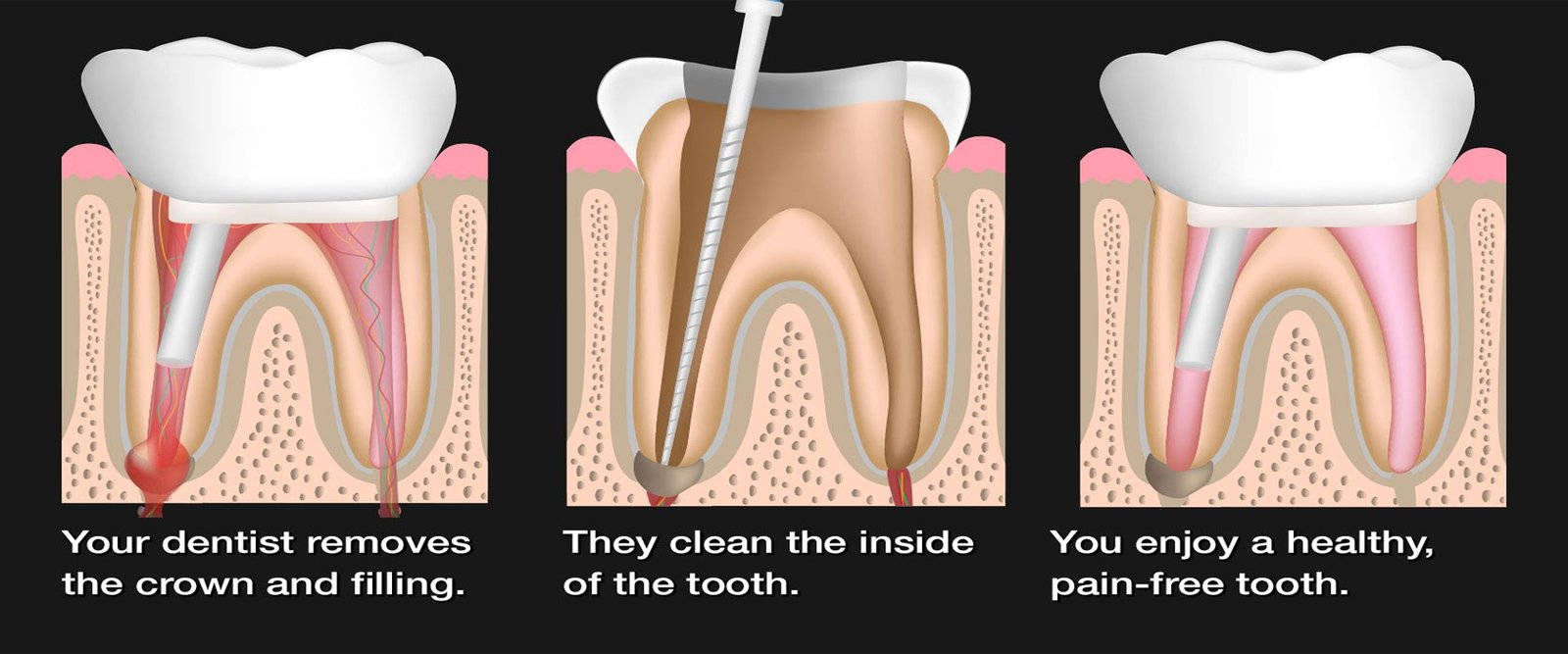
Root Canal Treatment
Root canal treatment, also known as endodontic therapy, is a dental procedure used to treat infection or damage within the tooth’s pulp. The pulp is the soft tissue inside the tooth that contains nerves, blood vessels, and connective tissue. When the pulp becomes infected or inflamed due to decay, cracks, or trauma, root canal treatment is necessary to save the tooth and prevent further complications.
What is Root Canal Treatment?
Root canal treatment involves removing the infected or damaged pulp, cleaning and disinfecting the inside of the tooth, and then filling and sealing it to prevent future infection. This procedure can alleviate pain, restore the tooth’s function, and preserve its natural appearance.
Benefits of Root Canal Treatment
- Pain Relief: Eliminates the source of tooth pain caused by infection or inflammation.
- Preservation of Natural Tooth: Saves the natural tooth, avoiding the need for extraction and replacement options like implants or bridges.
- Restored Function: Allows you to chew and speak normally without discomfort.
- Aesthetics: Maintains the appearance of your natural smile.
Signs You Might Need a Root Canal
- Severe toothache, especially when chewing or applying pressure
- Prolonged sensitivity to hot or cold temperatures
- Swelling and tenderness in nearby gums
- Darkening or discoloration of the tooth
- Persistent or recurring pimple on the gums
The Root Canal Procedure
Initial Consultation and Examination:
- The dentist or endodontist examines your tooth and takes X-rays to assess the extent of the infection or damage and determine if root canal treatment is necessary.
Anesthesia:
- Local anesthesia is administered to numb the tooth and surrounding area, ensuring a pain-free procedure.
Access Opening:
- An opening is made in the crown of the tooth to access the infected or damaged pulp.
Pulp Removal:
- The infected or damaged pulp is carefully removed from the pulp chamber and root canals using specialized instruments.
Cleaning and Disinfection:
- The interior of the tooth is thoroughly cleaned and disinfected to remove bacteria and debris.
Filling and Sealing:
- The cleaned root canals are filled with a biocompatible material called gutta-percha, which is then sealed with a dental adhesive to prevent re-infection.
Restoration:
- After the root canal treatment, the tooth is restored with a filling or crown to protect it and restore its function. A crown is often recommended for teeth that have undergone root canal treatment to provide additional strength and support.
Aftercare for Root Canal Treatment
- Oral Hygiene: Maintain good oral hygiene by brushing and flossing regularly to keep the treated tooth and surrounding gums healthy.
- Avoid Hard Foods: Avoid chewing on hard foods or using the treated tooth for a few days until it feels comfortable.
- Follow-Up Visits: Attend follow-up appointments as scheduled to ensure the treated tooth is healing properly and the restoration is functioning well.
Potential Risks and Complications
While root canal treatment is generally safe and effective, some potential risks include:
- Infection: In rare cases, the infection may persist or recur, requiring additional treatment.
- Tooth Fracture: A treated tooth can become more brittle and prone to fractures if not properly restored with a crown.
- Temporary Discomfort: Some patients may experience mild discomfort or sensitivity after the procedure, which typically subsides within a few days.
Contact Us
For more information about root canal treatment or to schedule a consultation, please contact our office. Our experienced dental team is dedicated to providing high-quality care to ensure your comfort and restore your oral health. We are here to help you maintain a healthy, pain-free smile.



